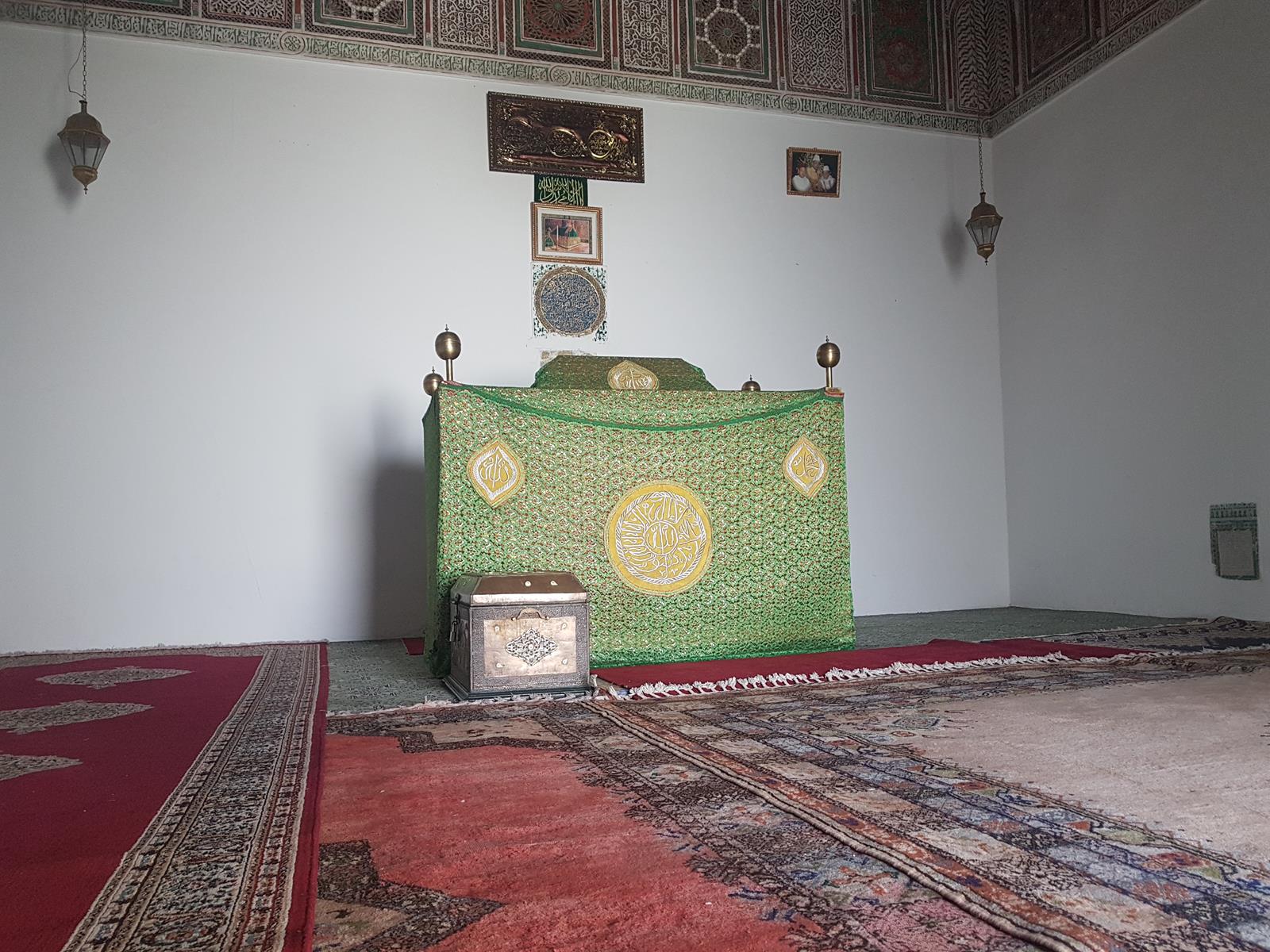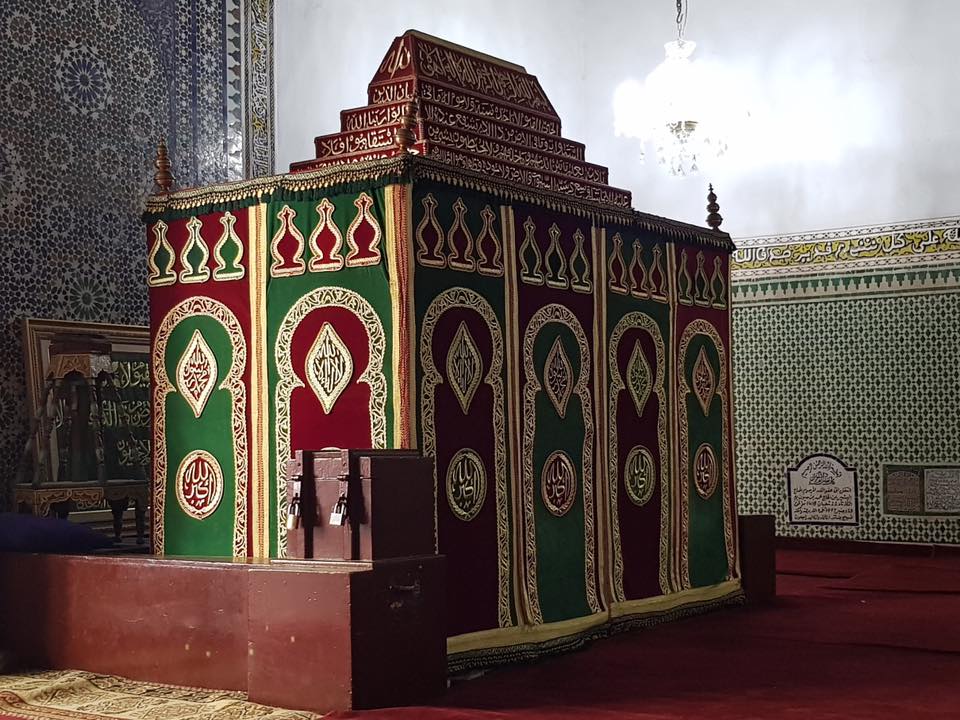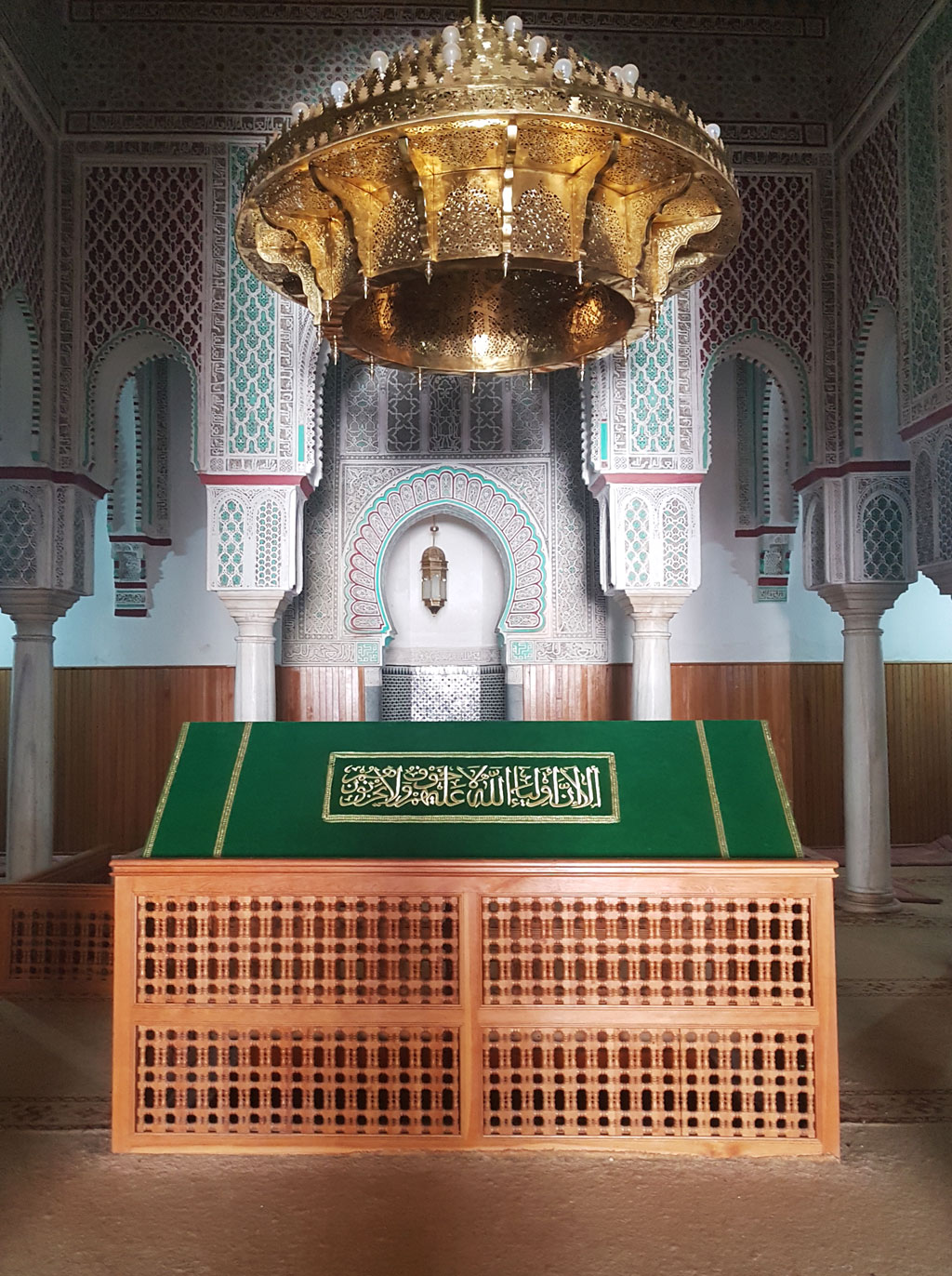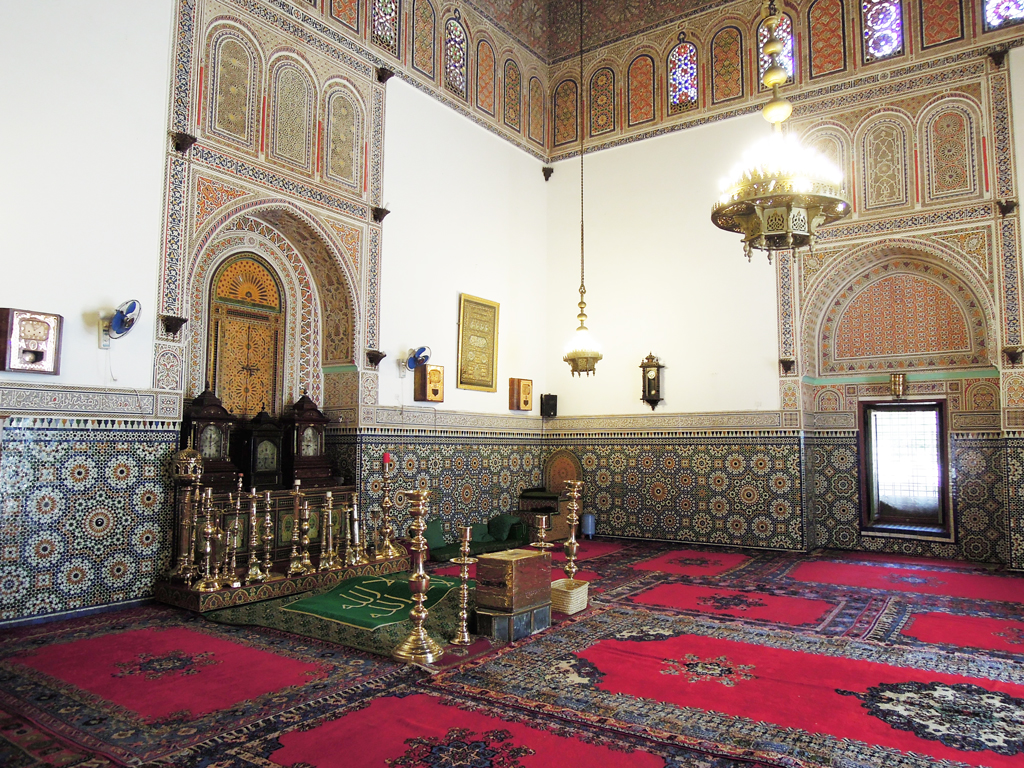
In the rich tapestry of medieval Islamic scholarship, few stories are as inspiring as that of Al-Suhayli, a scholar who lost his eyesight at seventeen yet went on to become one of the greatest Maliki jurists of his time. Born Abu al-Qasim Abd al-Rahman ibn Abd Allah al-Suhayli in 1114 in Fuengirola, al-Andalus (in present-day Spain), this remarkable man would overcome tremendous adversity to produce some of the most important works in Islamic literature, earning him a place among the Seven Saints of Marrakesh.
Al-Suhayli's full name was Abu Zaid Abd al-Rahman ibn Abd Allah ibn Ahmad ibn Abi al-Hasan, though he would become known simply as Al-Suhayli after the village of Suhail near Malaga in al-Andalus, from which his family hailed. His lineage traced back to Abu Ruwayha al-Khath'ami, for whom the Prophet Muhammad himself had tied a banner during the conquest of Makkah, giving Al-Suhayli a distinguished heritage that connected him directly to the earliest days of Islam.
He grew up in Malaga, where he began his education in the sacred sciences of Quran and Hadith in his hometown. As a young student, he showed exceptional promise, studying the Quran in both individual and collective recitations under the renowned reciter Abu Ali al-Husayn ibn al-Ahdab. He then learned the recitation methods of Nafi' and Ibn Kathir from the reciter Abu al-Hasan Ali ibn Isa al-Marwi. Additionally, he studied the Quran and aspects of Arabic grammar under the grammarian and ascetic Abu Marwan Abd al-Malik ibn Mujayyar, who was himself blind.
At the tender age of seventeen, Al-Suhayli suffered a devastating blow: he lost his eyesight. For most people, such a setback at such a crucial stage of education would have been insurmountable. But Al-Suhayli's determination and intellectual gifts would not be dimmed by physical darkness. Despite this profound disability, he pressed forward with his studies, demonstrating a resilience and dedication that would become the hallmark of his scholarly career.
During his time in Malaga, he excelled in grammar and gained fame for his eloquence. He studied the book "al-Hidaya" by Abu al-Abbas al-Mahdawi, and read and heard the Muwatta of Imam Malik for jurisprudential training and exposition. He also studied "Muntakhab al-Ahkam" by Ibn Abi Zamnin, building a solid foundation in Islamic law.
Al-Suhayli's quest for knowledge took him across the major centers of learning in al-Andalus. He traveled to Cordoba, where he studied the Quran according to the seven canonical recitation methods under the reciter Abu Dawud Sulayman ibn Yahya. In Cordoba, he also benefited from the teachings of the jurist and hadith scholar Abu Abd Allah al-Dhahabi al-Qurtubi, deepening his understanding of Islamic law and tradition.
His most significant scholarly relationship was formed in Seville, where he became a devoted student of the great Qadi and Imam Abu Bakr ibn al-Arabi. From this towering figure of Islamic scholarship, Al-Suhayli absorbed extensive knowledge of hadith, principles of jurisprudence (usul al-fiqh), and Quranic exegesis (tafsir). This relationship would prove foundational to his intellectual development.
Al-Suhayli also studied under the grammarian scholars Abu al-Qasim ibn al-Abrash and later attached himself to the grammarian Abu al-Qasim ibn al-Ramak, from whom he acquired valuable insights and benefits in the science of Arabic grammar. His teachers included some of the most distinguished scholars of the era, numbering among them Ibn al-Tarawa, Shurayh ibn Muhammad, Abu Mansur ibn al-Khayr, Abu Abd Allah ibn Ukht Ghanim, and Abu al-Qasim Abd al-Rahman ibn Rida.
Despite his blindness, Al-Suhayli became a leading teacher whose students would carry his knowledge to future generations. Among his most notable disciples were:
The fact that Ibn Arabi, whose works would profoundly influence Islamic mysticism for centuries, studied under Al-Suhayli speaks to the blind scholar's depth of knowledge and spiritual insight.
Around 1182, Al-Suhayli received an invitation that would define the final chapter of his life. Sultan Abu Yusuf Yaqub al-Mansur, the Almohad ruler known for his patronage of learning, summoned the distinguished scholar to Marrakesh. This was a great honor, reflecting Al-Suhayli's reputation throughout the Islamic world as a leading authority in Islamic sciences.
Al-Suhayli accepted the invitation and traveled to Morocco, where he would spend the remaining three years of his life in the imperial capital. His presence enriched the intellectual life of Marrakesh, and he continued teaching and writing until his death.
Al-Suhayli's written works demonstrate remarkable breadth and depth, particularly considering his blindness. His most famous work is al-Rawd al-Unuf (The Fragrant Garden), a comprehensive commentary on Ibn Hisham's biography of the Prophet Muhammad (al-Sira al-Nabawiyya). This seven-volume masterwork became one of the most important commentaries on the Prophet's life, combining meticulous scholarship with profound spiritual insight. It remains widely studied and referenced to this day.
His other major works include:
al-Ta'rif wa-al-I'lam li-ma Ubhima min al-Qur'an min al-Asma' wa-al-A'lam (The Identification and Clarification of What is Ambiguous in the Quran Regarding Names and Proper Nouns), a scholarly work addressing unclear references in the Quranic text.
Nata'ij al-Fikr fi 'Ilal al-Nahw (The Results of Thought on the Causes of Grammar), demonstrating his mastery of Arabic linguistic sciences.
al-Mashra' al-Rawi (The Clear Drink), another work on prophetic biography and the interpretation of hadith related to the Prophet's life.
Mas'ala Ru'yat Allah fi al-Manam wa-Ru'yat al-Nabi (The Issue of Seeing God in Dreams and Seeing the Prophet), exploring theological questions about divine and prophetic visions.
Hilyat al-Nabil fi Mu'aradat ma fi al-Sabil (The Noble Ornament in Opposing What is in the Path), a work of scholarly debate and refutation.
Qissat Yusuf (The Story of Joseph), his treatment of the Quranic narrative of Prophet Joseph.
Kitab al-Fara'id wa-Sharh Ayat al-Wasiyya (The Book of Legal Shares of Inheritance and Explanation of the Verses of Bequest), addressing Islamic inheritance law.
al-Qasida al-'Ayniyya (The Poem in 'Ayn), a poetic composition.
Mas'ala al-Sirr fi 'Awar al-Dajjal (The Issue of the Secret Regarding the Dajjal's One Eye), exploring eschatological matters.
Ibn Dihya al-Kalbi, one of Al-Suhayli's students, recorded something remarkable about his teacher: Al-Suhayli had a particular supplication that he would recite, and whenever he or anyone else used these supplications to seek God's help, their prayers would be answered. Al-Suhayli himself testified to this, saying: "Whenever I or anyone else sought God's help through these supplications, our prayers were answered."
This supplication became famous and continues to be recited to this day by the many visitors who come to his blessed tomb in Marrakesh. The fact that his prayers were consistently answered speaks to his elevated spiritual station and closeness to God, despite—or perhaps because of—his physical blindness, which may have sharpened his inner vision.
Al-Suhayli passed away in 1185 in Marrakesh, at approximately 70-71 years of age, having spent his final years enriching the city's intellectual and spiritual life. He was buried in a cemetery just outside Bab al-Rab (also known as Bab Acharya), a former gate in the city walls. His tomb and zawiya (spiritual center) lie hidden within this cemetery, where only Muslims are permitted to enter.
The location of his burial is itself historically significant: it was built on the site where, in 1147, the Almohad forces of Abd al-Mu'min had defeated the Almoravids, marking a turning point in Moroccan history. That Al-Suhayli's resting place occupies this ground speaks to his importance in the spiritual geography of the city.
Al-Suhayli is venerated as one of the Seven Saints of Marrakesh (Sab'atu Rijal), a group of holy men whose tombs have become pilgrimage sites. Each year, thousands of visitors come to his mausoleum to pay their respects, seek blessings, and recite the supplications he taught. The annual pilgrimage to the tombs of the Seven Saints remains an important spiritual practice for Muslims in Morocco and beyond.
His tomb near Bab Ailen has become a place of peace and contemplation, where visitors can connect with the legacy of a man who transformed his physical limitation into spiritual and intellectual illumination. The mausoleum stands as a testament to the Islamic principle that true sight comes not from the eyes but from the heart.
Al-Suhayli's life offers profound lessons about perseverance, faith, and the nature of knowledge. Losing his sight at seventeen could have ended his scholarly ambitions, but instead it seemed to intensify his inner vision and determination. His blindness became, in a sense, a gift that allowed him to develop extraordinary powers of memory and concentration, enabling him to master complex texts and produce detailed scholarly works without the benefit of physical sight.
His commentary on Ibn Hisham's Sira remains essential reading for anyone seeking to understand the life of Prophet Muhammad in depth. His grammatical works contributed significantly to the preservation and understanding of classical Arabic. His students, particularly Ibn Arabi, carried his teachings forward in ways that would influence Islamic thought for centuries.
Al-Suhayli exemplifies the Islamic tradition's emphasis on knowledge as a sacred pursuit, regardless of physical circumstances. His tomb in Marrakesh, where his students and admirers can still seek his intercession through the supplications he taught, reminds us that true scholarship combines intellectual rigor with spiritual depth, and that the greatest barriers we face are often those we place upon ourselves.
In commemorating Al-Suhayli, we honor not just a brilliant jurist and grammarian, but a soul who saw beyond the darkness to illuminate the path for countless seekers of knowledge. May Allah sanctify his secret and grant us the love of His saints.










Find all our meditations on the Nur App!
Experience tranquillity through Qur'anic recitations and meditations on our Nur App and develop healthy spiritual routines to maintain your God-given Nur (light).
